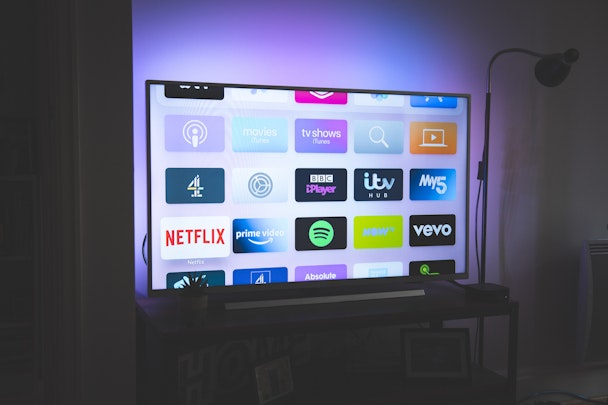Media study: smart TV penetration hits 50% for the first time in numerous markets
A far-reaching report informed by Insider Intelligence, Publicis and GWI has identified key digital trends worldwide following a mammoth analysis of 43 markets and the responses of 100,000 respondents over the first half of 2021.

Spanning 43 nations, the report leaves no corner of the globe untouched
The primary takeaway is that the march in the adoption of smart TVs continues unabated.
The Global Media Intelligence Report also documented an acceleration in the adoption of smart products as ownership of PCs and tablets continue their inexorable decline.
Smart products take off
-
Penetration of niche smart devices such as smartwatches, security systems and energy monitors, a novelty in 2020, continues to gain momentum, with penetration climbing significantly in the UK and US to 25% and 20.5% respectively.
-
This embrace of connected devices extends to the television, where smart TVs continue their advance, rising by several percentage points year-on-year in most countries to lift penetration above 50% for the first time, in many cases becoming the default home entertainment staple.
-
What goes up must come down, and ownership of PCs and tablets continues a remorseless decline, with smartphones now sometimes the only digital device owned by many internet users.
Digital video overtakes broadcast TV
-
It’s long been expected but is now a reality in many countries as digital video overtakes broadcast TV. In close to half of all countries surveyed 75% of internet users had viewed streaming video-on-demand (VOD) within the past month.
-
TV reaches more consumers than any other content medium, but the share of internet users eyeing digital video exceeds those watching live TV in many markets.
-
Broadcast radio has held up surprisingly well, however, with time spent tuned in largely unchanged since 2020 despite digital audio alternatives.
How does the UK stack up?
-
From a British perspective over 86% of internet users polled had watched live TV in the past month, devoting an average of 2 hours and 39 minutes to broadcast TV each month – a small year-on-year rise.
-
Also rising slightly was the share of viewers tuning in to catch-up and on-demand services, which hit 84.2%, one of the highest rates observed globally.
-
Streaming was up year-on-year across every demographic, with the share of British viewers signing up for the likes of Netflix or Amazon Prime Video jumping to 80.8%.
-
Young people were the most enthusiastic, hitting adoption rates of 94.2% among those aged 16-24. By contrast, penetration fell to 61% among 55-64-year-olds, though this was still up year-on-year.
-
Digital viewing in the country mirrored the trajectory of international markets, with take-up of VOD reaching 92.5%, further reinforcing the fact that digital video is far more popular among internet users than live TV.
What do the report authors say?
-
Kelly Kokonas, executive vice-president, global data strategy at Publicis Media-Starcom, said: “When, where and how people consume media continues to evolve, and this is no exception in 2021 as the global pandemic continues to alter our daily routines for a second year.”
-
Jason Mander, chief research officer at GWI, added: “Of course, many internet users had already experienced the types of restrictions imposed during the first phase of the health crisis in 2020, so we might have expected little change in their media behavior in 2021. That was true in some cases – but in others, a second year of the pandemic seems to have prompted significant shifts. For example, in many countries digital video has overtaken broadcast TV. Subscription video-on-demand (SVOD) products enjoyed a big boost in 2021, suggesting many internet users who resisted the appeal of Netflix, Amazon Prime Video and other providers last year finally gave in to temptation as the pandemic continued.”
-
Offering a tidy summation of the report from a marketer’s perspective, Aaron Goldman, chief marketer at Mediaocean, said: “It all adds up to a landscape that isn’t just shifting from one channel to another, but massively diversifying. This year we’ve also heard a lot of chat about what could turn out to be the seeds of the next wave after ‘smart tech,’ with conversation stirring about the metaverse.
-
“It can be tempting to speculate about which channels might lose out when new trends sway our media habits, but this year’s Global Media Intelligence Report shows that we shouldn’t lose touch with the basics. Marketers will always need to take an omnichannel approach, and the challenge will be to manage and measure that work everywhere from good old paper to the science fiction virtual spaces of the future.”
Methodology
-
Spanning 43 nations, the report leaves no corner of the globe untouched, drawing on proprietary data from Publicis and GWI together with analysis by Insider Intelligence.
-
No less than 100,000 respondents were quizzed for their thoughts as part of this process, with a minimum of 1,250 drawn from each territory – rising to a maximum of 25,000 in the US and China.
-
In all some 500 charts were generated for local markets drawing on proprietary data provided by Publicis and GWI, with analysis, context and benchmarks provided by Insider Intelligence.

